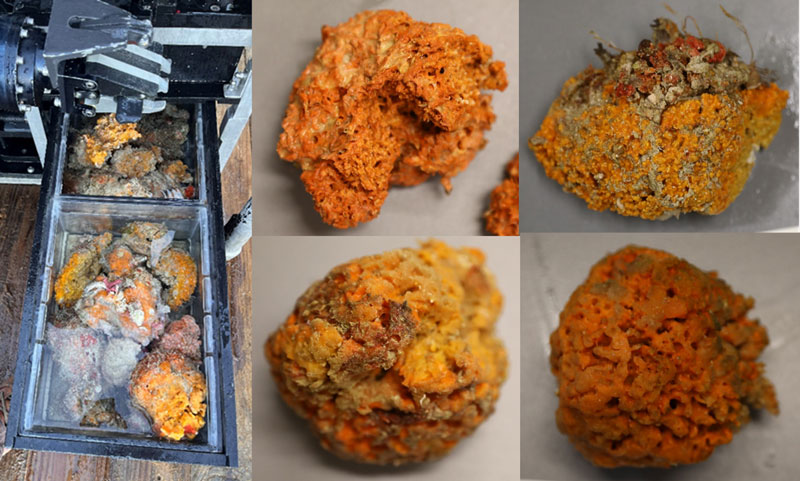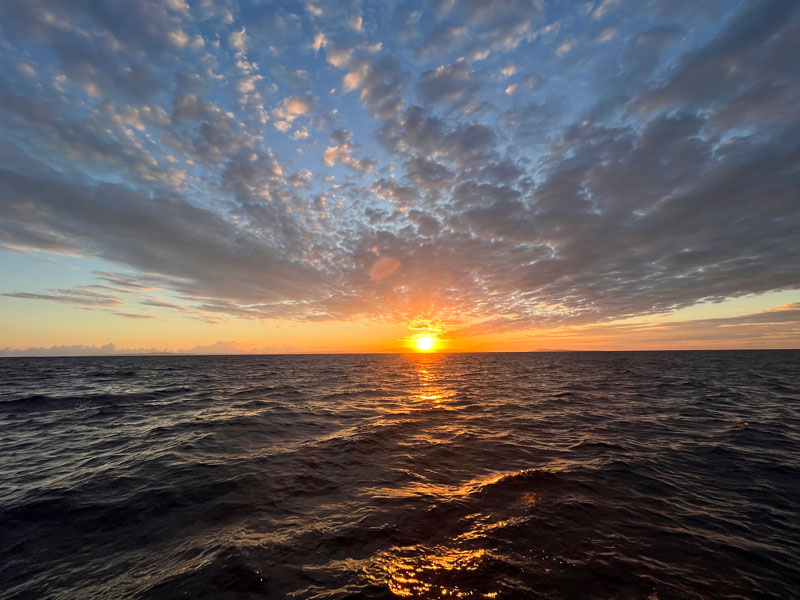Exploration of Deepwater Habitats off Puerto Rico and the U.S. Virgin Islands for Biotechnology Potential
Wanted for Killing Parasites: Hunting for Sponge Treasure and a Treasured Sponge
Over the years, my research team has found organisms that make very exciting natural products that are beneficial to human health, such as selectively targeting cancer cells or killing parasites. Studies to fully understand how these natural products work requires more of them, therefore we need to collect more of the organism that makes them. For every expedition, we have a list of "most wanted" organisms that we would like to re-collect. Occasionally, we get the opportunity to return to a location where we had initially collected an organism. This expedition provided just such an opportunity!

This was my 11th ocean research expedition as a member of the Marine Biomedical and Biotechnology group at Florida Atlantic University’s Harbor Branch Oceanographic Institute (HBOI). The group first began collections in 1984 and over the decades built a very impressive collection of deep-sea and shallow water marine organisms. We have tested the effects of the natural products produced by some of these organisms against diseases such as cancer, dementia, and parasitic infection, either at HBOI or with collaborators elsewhere in the United States and abroad.
HBOI last explored the deep areas off Puerto Rico and the U.S. Virgin Islands using the Johnson-Sea-Link manned submersible in 1996. During that expedition, an orange sponge identified from the family Raspaillidae was collected off the western coast of Puerto Rico at a depth of 80 meters (262 feet). Since then, we’ve tested its natural products against cancer in a variety of ways, but found they didn’t kill cancer cells.
Recently, we worked with a collaborator at the University of Minnesota who searched our collection specifically for natural products that could kill the parasite Cryptosporidium. This parasite can cause severe illness and death in immunocompromised individuals and developmental issues in infected children.
Testing showed that the Raspaillidae sponge collected off Puerto Rico in 1996 contained a natural product that killed parasites but didn’t kill human cells. This natural product was not known to science at the time (meaning it wasn’t previously written about in a scientific journal) and has a very unique structure. The discovery was exciting, but we needed more samples of the sponge to extract more of the natural product and to conduct in-depth studies to determine if we could produce the natural product in the lab (e.g., via sponge cell culture, biosynthesis, or bacterial isolation).

The day came to repeat the 1996 dive. It was a beautiful sunrise. We deployed the Mohawk remotely operated vehicle (ROV) to 80 meters (262 feet) and explored the seafloor, stopping to look at, and sometimes sample, promising orange sponges. After two hours and 10 samples, we brought the ROV back to the ship’s deck to see if any of the samples were our target.
Unfortunately, none of the sponges were the Raspaillidae sponge, so we tried again, exploring in a different direction. There were lots of orange sponges! After nearly three hours and seven samples, we recovered the ROV and unloaded our treasures. Still no sign of the treasured sponge.
For the final dive that day, we launched the ROV in a different spot, and collected 13 more sponge samples. Once again, we didn’t find the sponge we were looking for.
The following day, the weather hampered our original plans, so we returned to the 1996 dive site to give it another shot and explore between 145 meters (476 feet) and 70 meters (230 feet). We collected some more interesting sponges, but sadly, no Raspaillidae sponges.
I was disappointed we didn’t find any Raspaillidae sponges, but it’s like looking for a needle in a haystack. Still, we did collect some beautiful sponges that we hadn’t collected before. We brought these sponges back to our lab, where we’ll analyze their natural products and test them to see if they can be developed into useful pharmaceutical products.
Even though we didn’t find the sponge we were hoping to find, the sponges we collected are all valuable additions to our collection. Who knows, maybe some of them will be found to yield therapeutic natural products.
By Priscilla Winder, Harbor Branch Oceanographic Institute, Florida Atlantic University
Published September 9, 2024